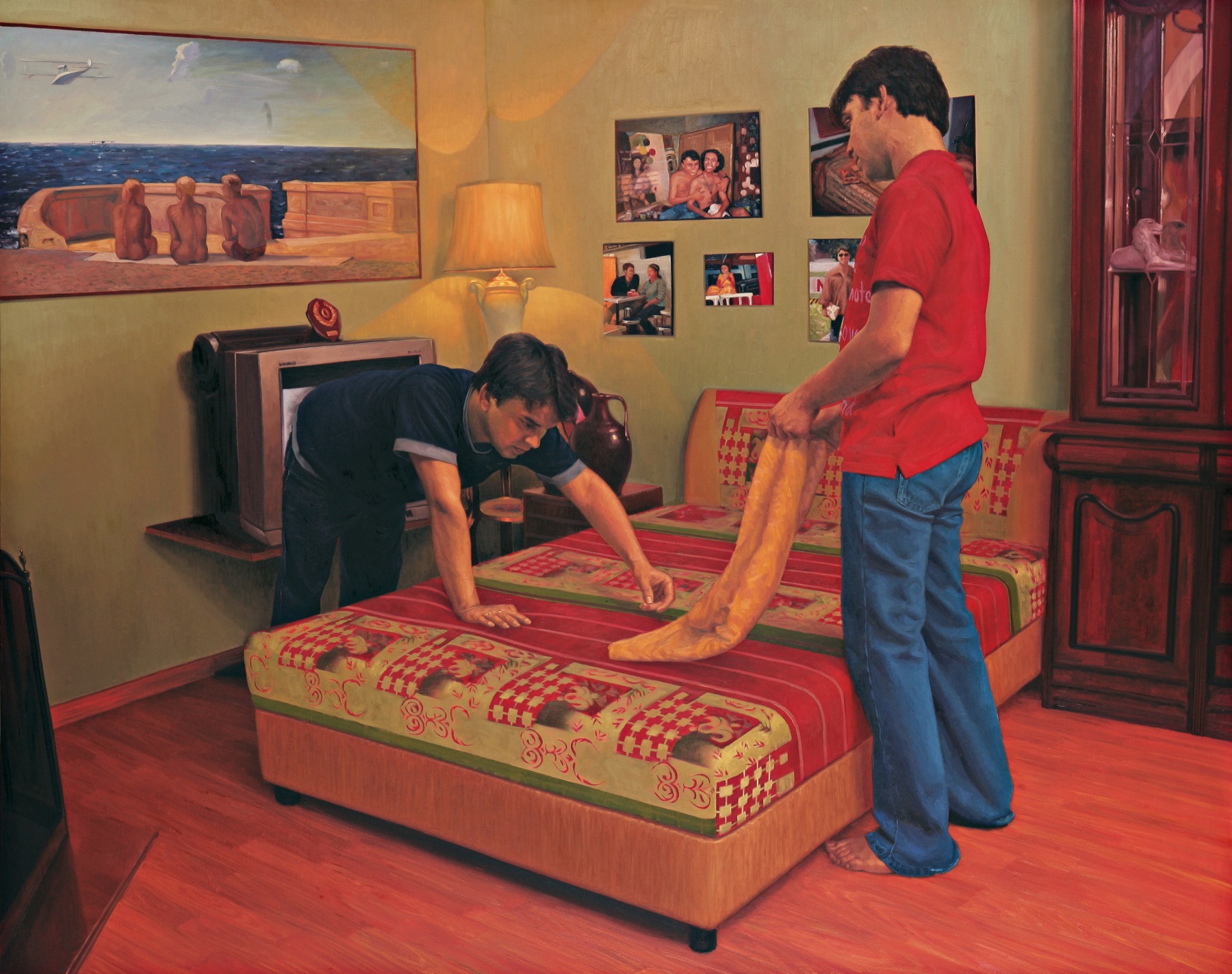Artist Spotlight
Artist Spotlight
Abir Karmakar found his direction around 2004 when working on a series of paintings which he describes as ‘altered’ or ‘fictional’ self-portraits, including of himself in drag. The artist’s notable virtuosity as a painter, is nevertheless built on long years of practice. He describes how growing up in West Bengal the child of migrants from Bangladesh, he made copies of the visual materials he had access to, which included illustrated calendars, Marvel Comics and socialist realist paintings from the catalogue of the Tretyakov Gallery in Moscow.

ABIR KARMAKAR, Interiors IV, 2006, oil on canvas, 72 x 88.7 in / 183 x 228 cm
Then later as a student at the Government College of Art and Craft in Kolkata, he recalls buying books on Western art, such as one book about Andy Warhol which he paid for in instalments. His trajectory as a painter has been interspersed with forays into 3D, and his recent body of work beginning with a large-scale commission for the Kochi Muziris Biennale in 2016, reflects this, featuring what he describes as site specific paintings. In these works, interiors from a house in Kutch, Gujarat, have been meticulously reproduced in sections on outsized canvases, with dimensions made to fit the venue’s architecture, providing the viewer with a to-scale perspective. These interiors and others from subsequent installations, feature a particular middle-class Indian home from a certain era, now perhaps being superseded in the big cities by new apartment buildings with their globalised aesthetic.
Rooms painted salmon pink, turquois blue and mint green, house glass fronted cabinets containing novels bound in newspaper, curios and terracotta gods, valuables are locked inside Godrej cabinets, and wall mounted boilers, air conditioning units and cumbersome television sets speak of technologies from previous decades. What these paintings depict as a common vernacular is in counterpoint to personal elements such as the framed footprint of a grandparent or the photograph of a grandchild.

Home, 2016, oil on canvas, 289 x 304.8 cm / 114 x 120 in, Kochi-MuzirisBiennale 2016-17
In these works, interiors from a house in Kutch, Gujarat, have been meticulously reproduced in sections on outsized canvases, with dimensions made to fit the venue’s architecture, providing the viewer with a to-scale perspective.
The inhabitants who once breathed life into these objects are absent, the house has been turned inside out with its minutiae exposed to the forensic gaze of the viewer in the brightly lit environment of the gallery. Are these works supposed to be read as nostalgic, sentimental, touching, voyeuristic or anthropological? Through this particular staging, the artist turns the question back on the viewer, who inhabits the installation like an actor walking through a set.
— Grant Watson

Home, 2016, oil on canvas, 279 x 231 cm / 110 x 91 in
Kochi-MuzirisBiennale, 2016-17
The inhabitants who once breathed life into these objects are absent, the house has been turned inside out with its minutiae exposed to the forensic gaze of the viewer in the brightly lit environment of the gallery.
Grant Watson is an independent curator based in London. He holds a PhD in Visual Cultures from Goldsmiths College, London. He was Senior Curator at Iniva, London (2010-14), and Curator at MuHKA, Antwerp (2006-10), where he presented the large-scale exhibition “Santhal Family: Positions Around an Indian Sculpture" (2008), which addressed left politics and modernism in India. He was Visiting Curator for documenta 12 in Kassel in 2007, where he researched the participation of contemporary Indian artists in the exhibition. Recent activities include 'bauhaus imaginista' a 3-year research project exploring the transnational character and reception of the Bauhaus with exhibitions and discursive events taking place in Asia, Latin America, Europe and the USA.